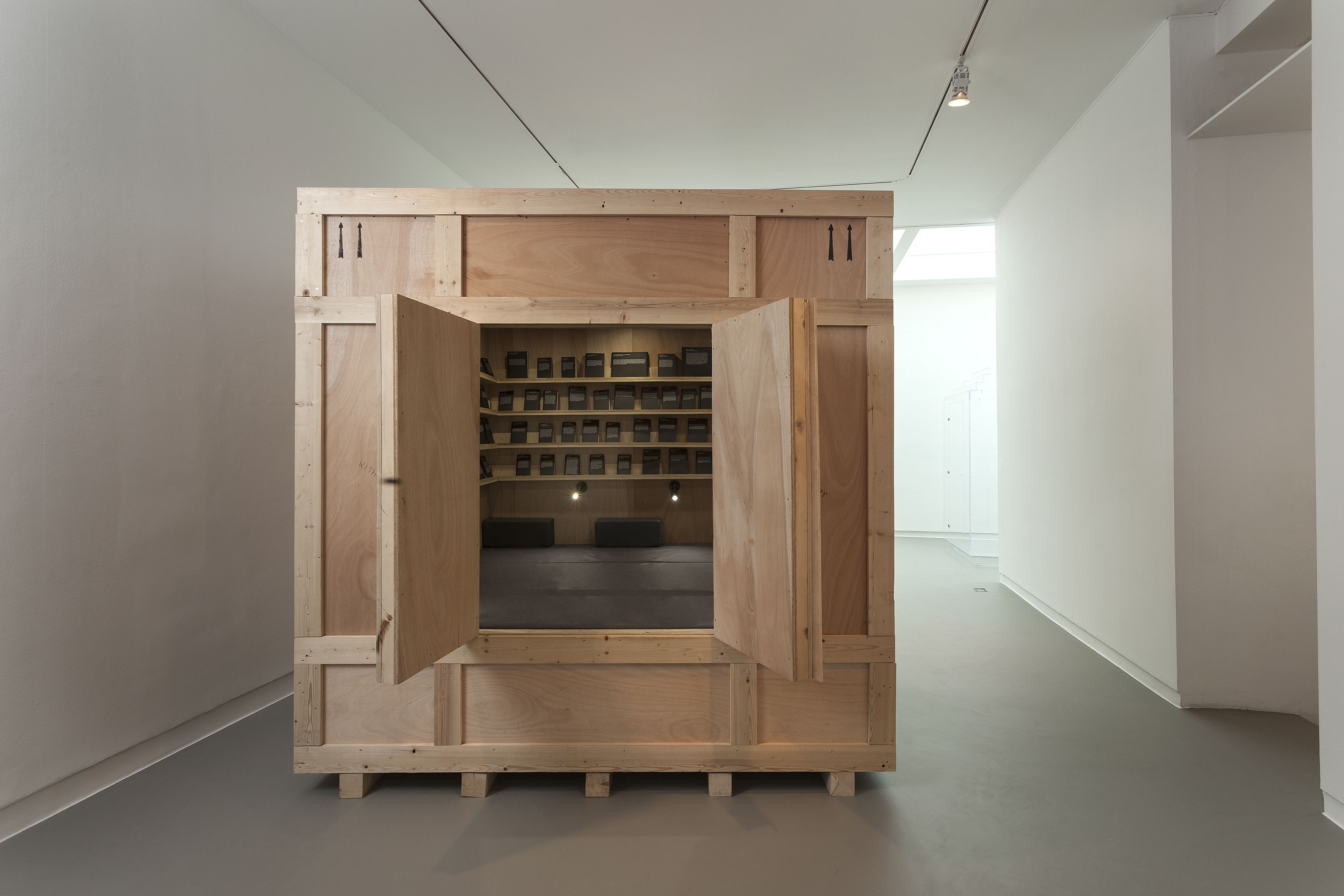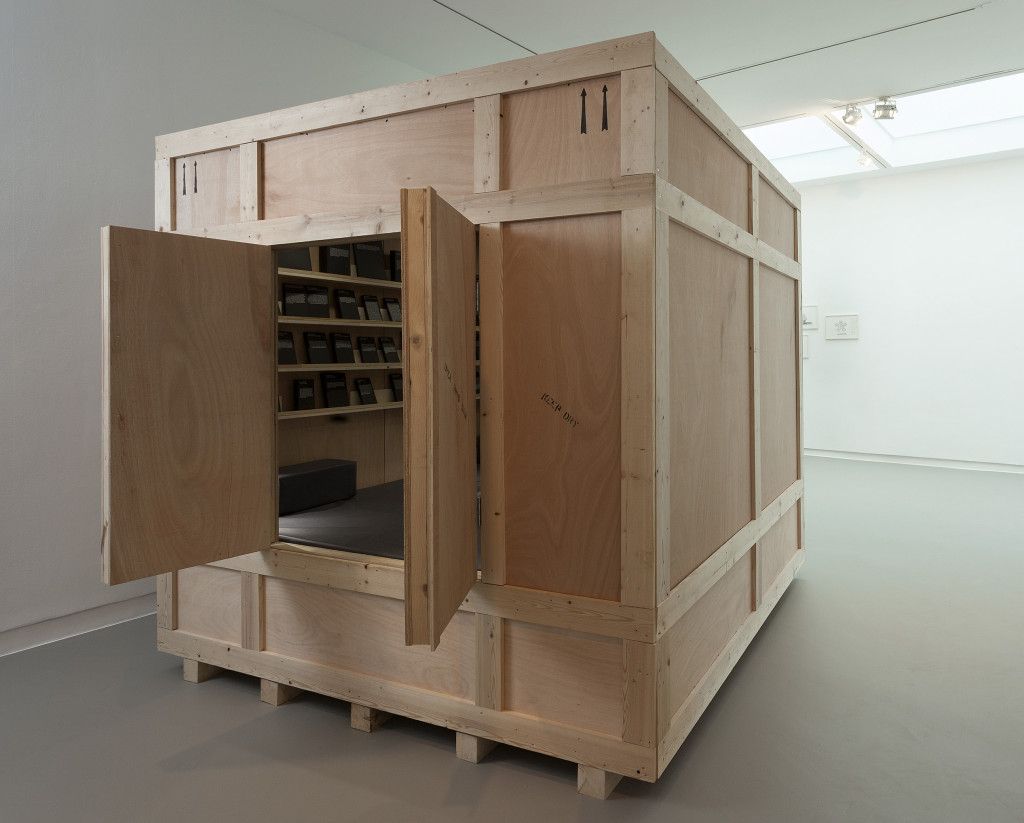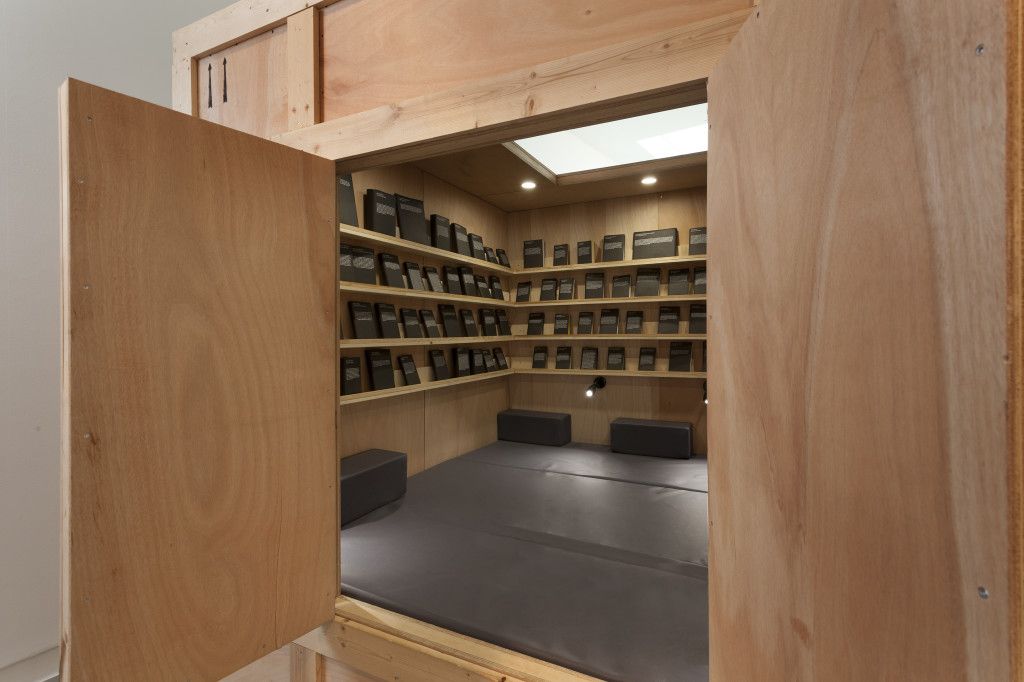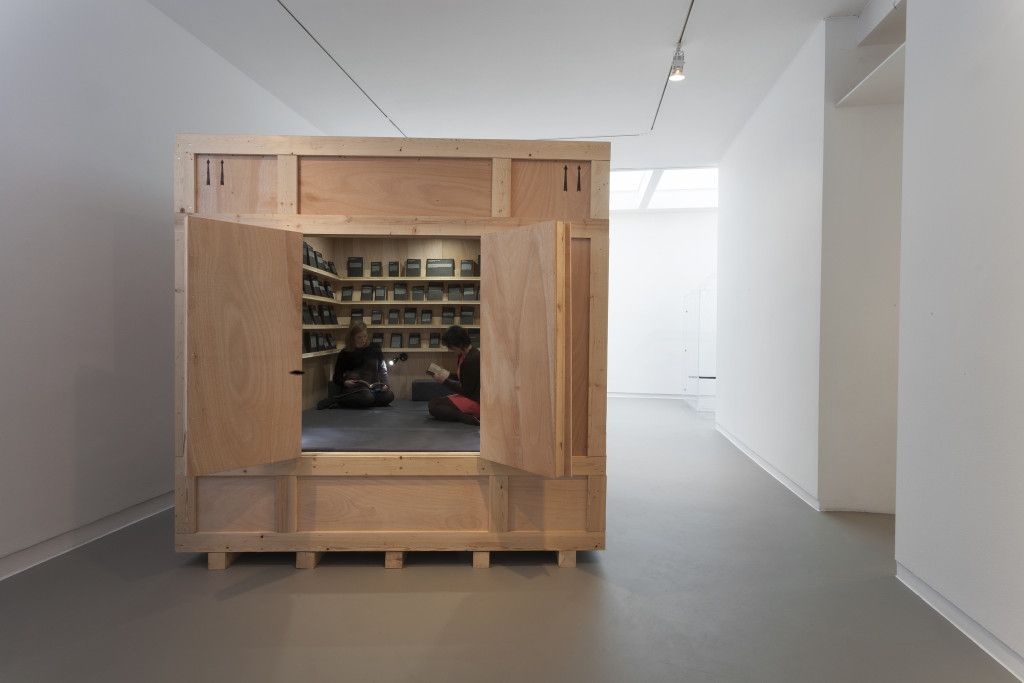Amsterdam , 2014
ROOM FOR FORBIDDEN BOOKS
Wooden crate, light, mattress, pillows. 250 × 250 × 250 cm
Collection Banco Sabadell
Photographer: Michel Claus
At the Pablo Picasso National Museum, Alicia Framis presented "Room for Forbidden Books" (2014), an installation designed like a shipping crate forming a closed room containing over a hundred books that have been banned at various times or in different countries. Visitors are invited to read these forbidden works in the quiet, private space. By juxtaposing seemingly innocent titles like Beatrix Potter's "The Tale of Peter Rabbit" with more provocative works such as Karl Marx's "The Communist Manifesto," Framis highlights the problematic nature of censorship. Through encouraging acts of quiet "disobedience," she illuminates the mind's capacity to transcend accepted boundaries while revealing the often absurd consequences of censorship. The most significant aspect of the installation is the interaction that occurs among people sharing this space.




At the Pablo Picasso National Museum, Alicia Framis presented "Room for Forbidden Books" (2014), an installation designed like a shipping crate forming a closed room containing over a hundred books that have been banned at various times or in different countries. Visitors are invited to read these forbidden works in the quiet, private space. By juxtaposing seemingly innocent titles like Beatrix Potter's "The Tale of Peter Rabbit" with more provocative works such as Karl Marx's "The Communist Manifesto," Framis highlights the problematic nature of censorship. Through encouraging acts of quiet "disobedience," she illuminates the mind's capacity to transcend accepted boundaries while revealing the often absurd consequences of censorship. The most significant aspect of the installation is the interaction that occurs among people sharing this space.